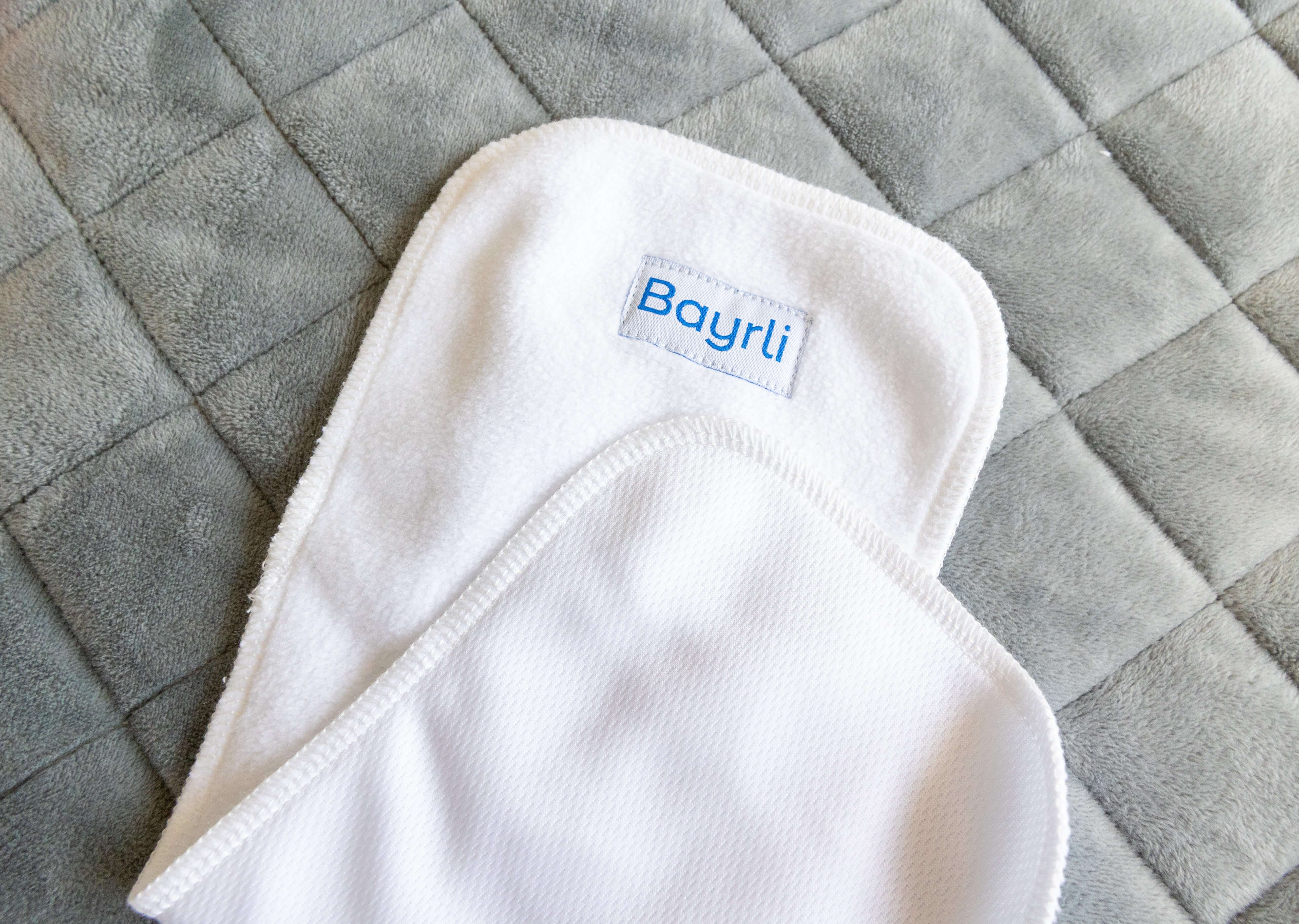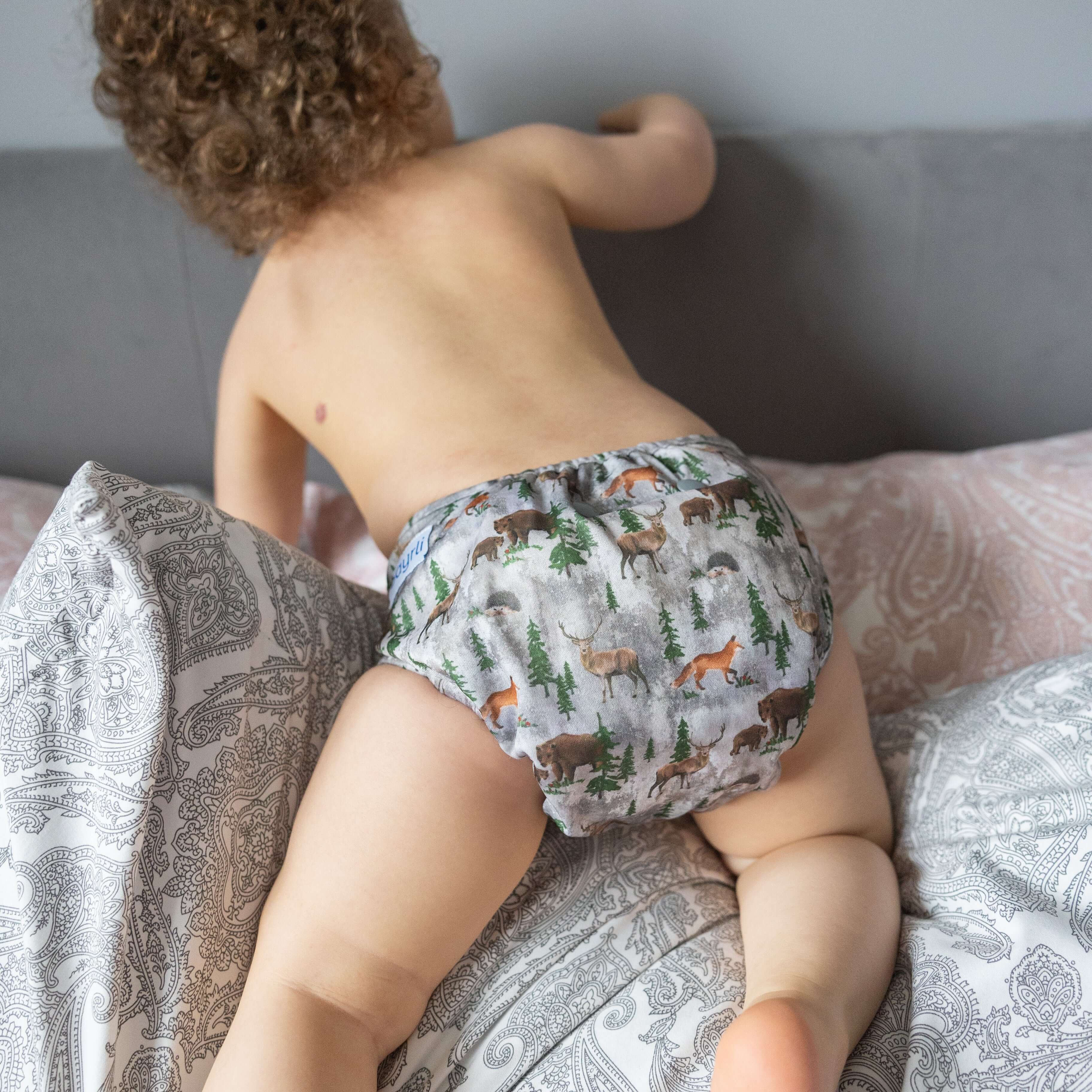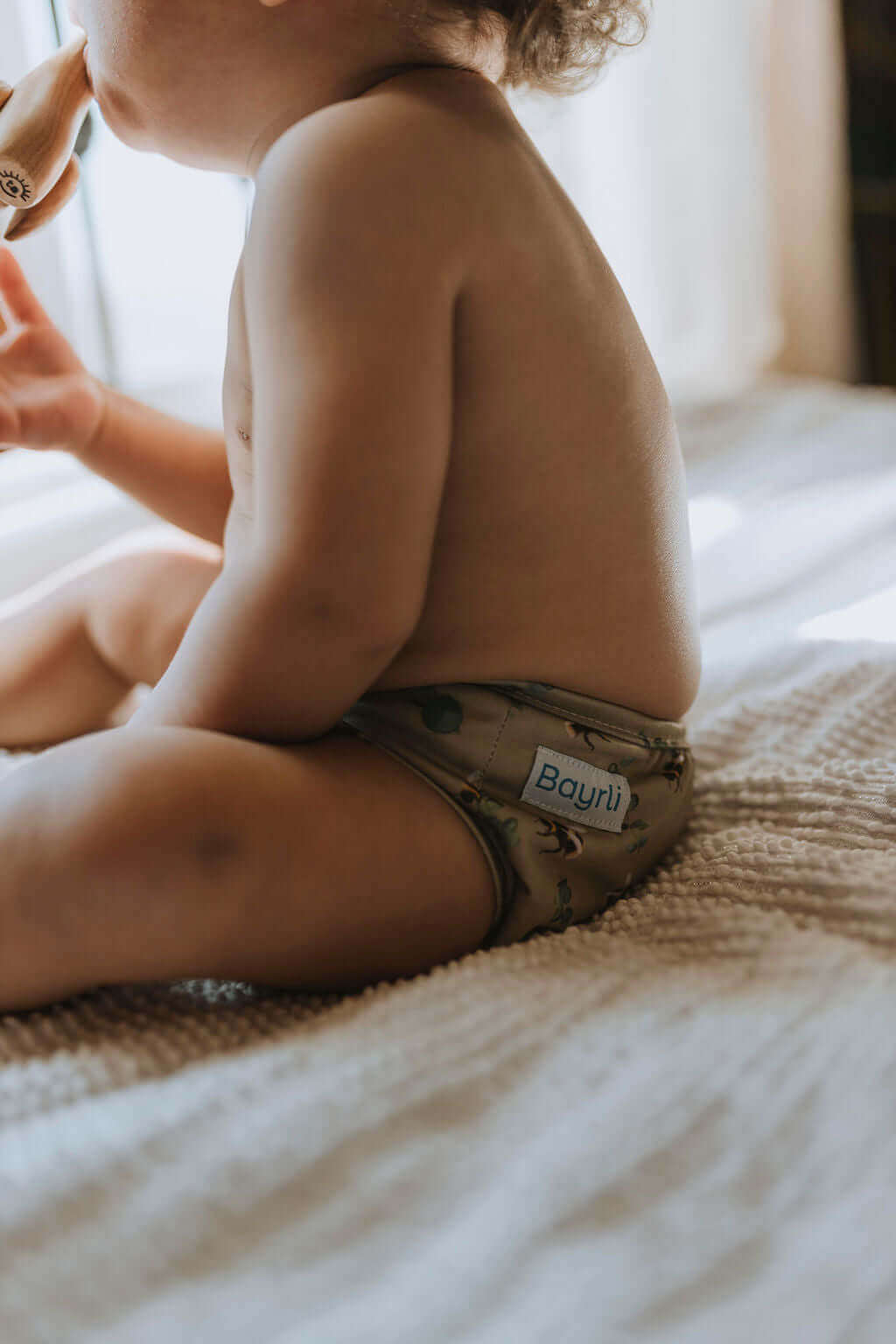
Everything you need to know about diaper liners
A good reusable diaper liner is an essential in every cloth diaper kit for a variety of reasons, but as there are so many types of cloth diaper liners available and so many things to consider, we thought we’d put everything in one place for you.
For some parents, the thought of having to touch their baby’s poop is a deal-breaker as this is unlikely to be a scenario with disposable diapers. Luckily, there are many cloth diaper accessories available to essentially eliminate the chance you’ll stick your hand in your baby’s nasties. These tools range from cloth diaper sprayers, finger mitts, poo scrapers and of course cloth diaper liners.
Cloth diaper liners are simply a single or double layer of material you add to your child’s cloth diaper to make solid waste clean up easier. Of course we ensure they’re designed to last and always perform their job, but that’s all they are. They are also a good way to protect your diapers from stains and from cloth diaper creams that are not friendly for reusable diaper fibers and fabrics.
There are so many types of liner available, and we will guide you on how to use them, but we shoud begin by explaining what qualities to look for in a reusable diaper liner as many brands unfortunately mislabel this term.
Difference Between Diaper Inserts and Diaper Liners
When you start using cloth diapers you realise just how many terms there can be. It’s important to note that cloth diaper liners are different from cloth diaper inserts. Liners for reusable diapers are thin pieces of fabric or mesh that are not meant to absorb any liquid. And this is a vital fact; properly designed liners are meant to let liquid seep through while retaining solid substances such as poop and diaper ointments on top. This applies to both reusable and single use diaper liners.
On the contrary, reusable diaper inserts are meant to absorb and hold liquid in. There are so many types that work in a wide variety of scenarios. Inserts are added to diapers to increase the diaper’s overall absorbency.
Difference Between Disposable Liners and Reusable Liners
Reusable, or washable cloth diaper liners are usually made from a single or double layer of fabric that can be washed along with your cloth diapers many times without falling apart. Designed to last until your baby is potty trained, reusable liners are most commonly made from some version of fleece material. We use fleece as not only does it allow liquids to pass through, it also wicks moisture away from your baby’s undercarriage area and maintains its dry feeling even when wet; it’s a “stay-dry” layer. Hence the name! The opposite side of our Stay Dry Diaper Liner features an athletic wicking jersey (AWJ) fabric that also wicks away moisture. It's really a personal preference which side you'd like to use on your baby.
This moisture-wicking layer we have is actually an essential component to easy cloth diapering. For babies who unfortunately have a sensitivity to moisture against their delicate skin it actually reduces the risk of diaper rash.
Disposable liners for cloth diapers are thin fabric-like mesh that you place between the diaper and your baby to catch the solid waste. Exceptionally thin, they act as a barrier to protect your diapers from diaper ointments and creams that are not cloth safe.
Disposable cloth diaper liners are most often made from viscose, often rayon viscose, or bamboo viscose. Rayon is the name given to a material made from wood pulp broken down into cellulose bits. It is then polymerized and extruded into fine fibers. Many disposable liners are biodegradable as they’re made from these natural fibers, however you should make sure they are safe to put in your refuse and you should enquire how long they take to break down.
Can You Flush Biodegradable Diaper Liners?
Many brands sell and market their disposable diaper liners as flushable. They promote this aspect and encourage you to flush them down the toilet just like you would with toilet paper. But we don’t flush baby wipes so how are flushable cloth liners any different?
They’re not.
There is not a single biodegradable liner out there today that can be flushed despite what the brand will tell you.
While disposable cloth diaper liners are often labeled “flushable” they are just like baby wipes. Disposable liners and ‘flushable’ liners should be disposed of in the garbage each and every time. You certainly can flush them without an immediate blockage, but we strongly advise you stop this habit now if you want to avoid issues with your plumbing system.
So How Do You Dispose of Biodegradable Diaper Liners?
Simply scrape or dump any poop into the toilet and then to throw the disposable diaper liner into the trash. You can of course simply throw it straight into your refuse bin but you may be mindful of weight limits. This should also be the case for any single use baby wipes in the home. When used, simply pop them in the garbage but unfortunately this isn’t common knowledge.
Could I Use Baby Wipes as Diaper Liners?
No.
This is due to the composition of the majority of baby wipes. Baby wipes are wet with a cleansing solution. This is why they are so effective at cleaning backsides. Wetness against your baby’s skin for a long period of time is likely to lead to rashes and even a yeast infection in your baby’s groin area.
Do I Need to Use Cloth Diaper Liners?
Diaper liners are not essential. However, like many non-essentials in any industry, liners do have many benefits.
We’re visual learners, so here is a quick table for you to compare and contrast the differences:
| Disposable Cloth Liners | Reusable Cloth Liners | |
| Clean-Up | Placed in your refuse bin or compost. | Solid waste is disposed of into the toilet, and liner goes in laundry bag until wash day. |
| Leak Protection | No. | No. |
| Dryness | No. | Yes. |
|
Combats Diaper Rash |
No. | Yes. |
|
Flushable |
No. | No. |
How Do You Use Cloth Diaper Liners?
Both disposable cloth diaper liners and reusable cloth diaper liners are placed on top of the cloth diaper when the diaper is put on. They sit between your baby’s reusable diaper and your baby, meaning that it will be the material touching your baby’s genital area and not the diaper itself.
When the baby is finished and the diaper is soiled, the used liner will either go into the trash if it’s a disposable liner or in your laundry bag with your other dirty diapers if it’s washable/reusable.
There is never really going to be a need to use more than one liner in the cloth diaper.


